

Homochitto Lumber Co.
|
Standard Gauge 35-lb rail Mill location: Bude, MS (Franklin Co.) Years of Operation: 1913-1936 Mill Capacity: 165,000 ft/day in 1917 Miles Operated: Locomotives Owned: 11 |
See also: Equipment: 2 Clyde skidders bought new 11-18-1919 and 10-12-1920 |

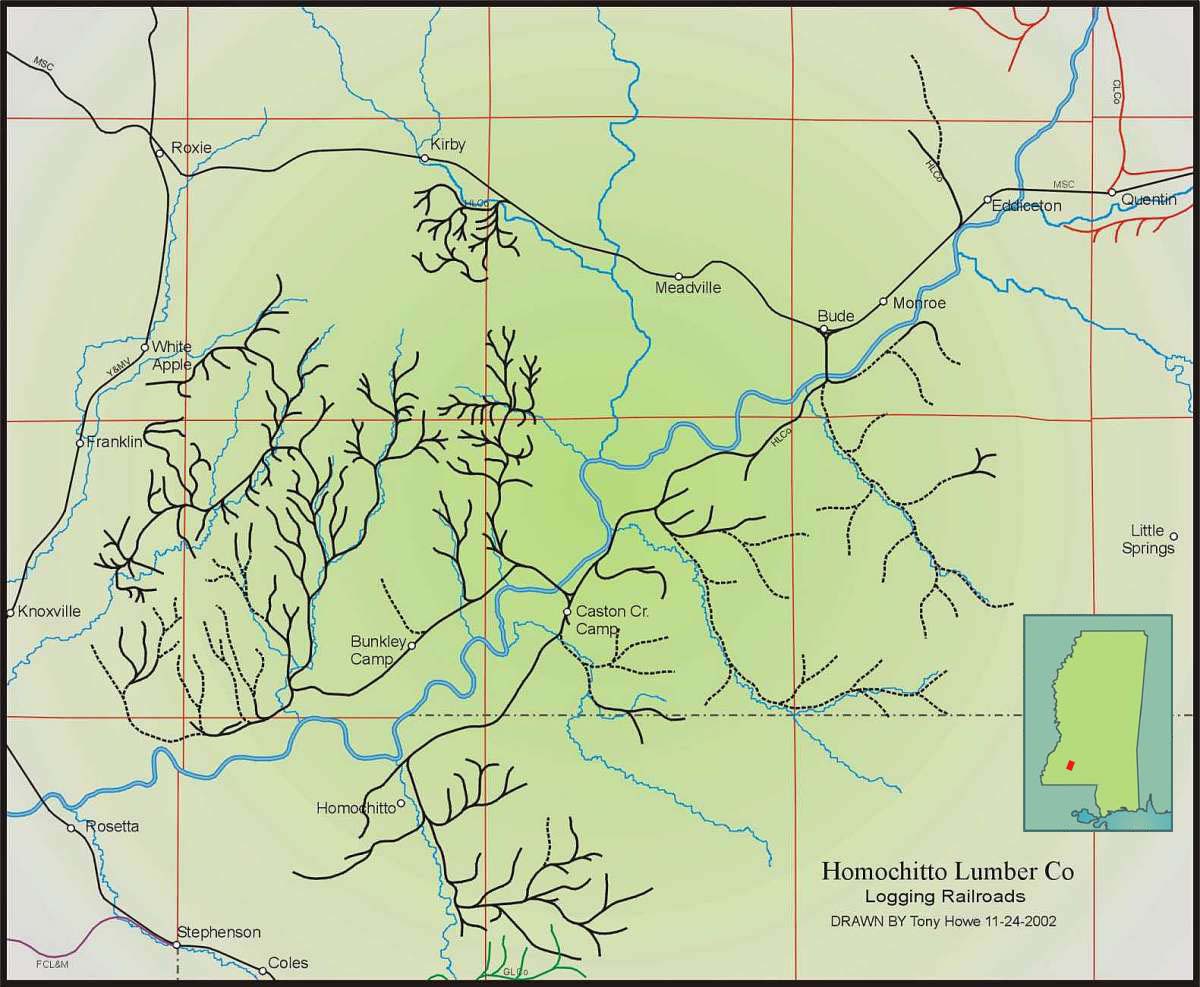
Click Maps for Larger Versions |
||||||||||||||||||||||||||||||||||||||||||||||||||||||||||||||||||||||||||||||||||||||||||||||||||||||||||||||||||||||||||||||||||||||||||||
|
History by Tony Howe:
The Homochitto Lumber Co. was formed on February 6, 1912, when several
wealthy lumbermen incorporated the company at Brookhaven with $500,000 in
authorized capital stock. Among the incorporators were C. S. Woolworth,
John T. Porter, Cyrus D. Jones, Fenwick L. Peck and Edson S. Peck, all of
Scranton, Pennsylvania, F. M. Kirby, of Wilkesbarre, Pa., and Samuel E.
Moreton, of Brookhaven, MS. Officers of the company were: F. L. Peck,
president; C. D. Jones, vice president; G. F. Royce, secretary, and John
T. Porter, treasurer. These
men were all officers and directors of the J. J. Newman Lumber Company and
the Mississippi Central Railroad. The new company took its name from
nearby Homochitto River. Fenwick L. Peck had been engaged in the
lumber business in Pennsylvania since 1874, and in 1887 formed the
Lackawanna Lumber Co. at Mina, Pennsylvania. In 1896, J. J. Newman
traveled to Pennsylvania and convinced Peck, along with other Scranton
area businessmen, to invest in the J. J. Newman Lumber Co. at Hattiesburg,
Miss. Peck also became owner of the Alamogordo Lumber Co. in New Mexico. The J. J. Newman Lumber Company built a
standard gauge logging railroad westward from Hattiesburg. On November 15,
1897, this railroad was incorporated as the Pearl
and Leaf Rivers Railroad. Another large sawmill was constructed in the
newly formed town of Sumrall in 1902, and a second mill was added here in
1905. The railroad was renamed the Mississippi Central
Railroad on February 13, 1904, and was completed to Brookhaven in
April 1906. That same year a charter was issued to the Natchez
& Eastern Railway, which constructed a railroad from Natchez to
Brookhaven. In 1909, Mississippi Central Railroad formally absorbed the
Natchez & Eastern Railway, thereby providing through railway service
between Hattiesburg and Natchez. Sam E. Moreton, of
Brookhaven, Mississippi, became associated with the Homochitto Lumber
Company. Mr. Moreton had spent practically his entire life in the
manufacture of southern pine lumber, having been associated with his
father, A. E. Moreton, in the Moreton & Helms Co. at Cold Springs, one
of the pioneer lumber operations in Mississippi, having been formed in
1880. He was later secretary and treasurer of the Pearl River Lumber
Company at Brookhaven. In 1906 Mr. Moreton established the Central Lumber
Company that operated mills at Lucien, Bogue Chitto, Celco, and Quentin
Mississippi. S. E. Moreton superintended the construction of the
Homochitto Lumber Co. mill and became General Manager of that company and
was later named General Manager of the entire operations of both the
Newman and Homochitto companies. The Homochitto Lumber Co. began acquiring
large tracts of timber in Franklin, Amite, and Adams Counties soon after
its formation. On February 27, 1912, the company purchased approximately
14,710 acres of timberland from the J. J.
White Lumber Co., who had a large mill at McComb. A month later, on
March 12, 1912, Cyrus Jones transferred timber purchased by him to the
Homochitto company, which included 10,107.19 acres acquired from the Clark
Timber Co. and various tracts bought from other sources. On October 18,
1912, the Homochitto Lumber Co. purchased 15,952 acres from H. N. Hovey
and T. C. Starrett, both from Detroit, Michigan, for $174,318.00. By the
time construction started on the mill in 1912, the Homochitto company
reportedly owned a total of 90,000 acres. In June 1912 a mill site was selected in
Franklin County on the Mississippi Central Railroad, 28 miles west of
Brookhaven, and about three miles southeast of the county seat of
Meadville. A mill town was immediately surveyed and named Bude. There are
two versions of how the town got its name. One story is that the town was
named for the historic coastal town of Bude, England, near the Pecks’
ancestral home. The other version is that the town was named for Mrs. F.
L. Peck’s dog. Much of the land for the new mill and townsite was
purchased from J. M. Ford and Mrs. W. L. Wentworth. In the course of nine
months an entire town and mill plant were built, including a depot,
40-room hotel, twelve stores, public school, and a post office. Within a
year, the town had more than 200 new houses, and with a population of more
than 1200, Bude had outgrown the neighboring town of Meadville. The foundation for the mill building was
laid on June 12, 1912 and the mill was completed and in operation on
February 1, 1913. The sawmill
building was of concrete and steel, containing two band mills and a
48-inch gang. All mill machinery, except the gang, was built by the Filer
& Stowell Company. Cutting capacity of this mill was from 150,000 to
200,000 feet per day. In
addition to the sawmill, the facilities included a large planing mill, six
concrete dry kilns, a rough shed and a dressed lumber shed. When the mill
opened, it employed over 800 people. The town continued to grow after the opening of the mill. New business enterprises that located in the town included two drug stores, a theatre, automobile dealerships, restaurants, furniture store, cotton gins and bowling alley. Professional men located offices in the town, including physicians, dentists and attorneys. People from throughout the county gathered on weekends to trade with the merchants, to enjoy the entertainment and festive occasions that were available in Bude. The first logging railroad built by the
Homochitto Lumber Co. ran north from Eddiceton. A second line was soon built
southward from the mill, and after crossing the Homochitto River, followed
southwestward along the east side of the river.
A logging camp known as the Caston Creek Camp was established on this
line about two miles north of the Amite County line. After removal of the
timber east of the river, the camp was moved across the river and became
known as the Bunkley Camp. A new logging railroad was built across the river
northwest from the Caston Creek Camp. The main line then turned southwest to
the Bunkley Camp, while logging spurs were built northward up most of the
major creeks to log timber in the hilly areas between the camp and the
Mississippi Central. One spur was built up Richardson Creek that crossed a
steep ridge and then turned southwest along Dry Creek. Logging spurs in this
area reached within a mile of White Apple, Franklin, and within two miles of
Knoxville. Logging spurs were also built off of the Mississippi Central near
the small town of Kirby. In 1929 the company moved its logging road and log
camp to Adams County. The
logging railroad was built southward from a connection with the Mississippi
Central at Cranfield. It ran
along the east side of Sandy Creek all the way down to the Homochitto River.
Many spurs were built both east and west off of this main line. A logging
camp known as the Cranfield Camp was located near the point that Swafford
Branch flowed into Sandy Creek. The area that the company logged between
Sandy Creek and the Adams-Franklin County line was particularly rugged.
Logging spurs were built up almost every creek valley. For use on the logging railroads, the
Homochitto Lumber Co. owned a total of six 3-truck Shay locomotives over the
years. Two of them were transferred from the Lackawanna Lumber Co. at Cross
Fork, PA, in 1913, while two of them were bought new in 1913. Another 70-ton
Shay was bought new in 1920, and another was bought secondhand from a lumber
company in Wisconsin in 1927. In addition to the Shays, the company owned a
small 0-4-2T that was
transferred from Hattiesburg in 1912, and a Baldwin 2-8-0 that was also
transferred from the J. J. Newman Lumber Co. at Sumrall. The company also
bought two Clyde skidders new in 1919 and 1920. Many of the log cars used by
the Homochitto Lumber Co. were built in the J. J. Newman shops in
Hattiesburg and Sumrall.
The sawmill at Bude finally cut out in October 1936 and closed.
On June 3, 1943 the mill plant and timber lands were sold to the
Central Lumber Company, of Quentin, Franklin County.
Finally, on December 14, 1943 the corporation was officially
dissolved.
Much
of the above information was supplied by Gil Hoffman and various trade
journals.
|
||||||||||||||||||||||||||||||||||||||||||||||||||||||||||||||||||||||||||||||||||||||||||||||||||||||||||||||||||||||||||||||||||||||||||||||
Panoramic view of the Homochitto Lumber Co. mill at Bude. A long train of logs is unloading at the mill pond. |
||||||||||||||||||||||||||||||||||||||||||||||||||||||||||||||||||||||||||||||||||||||||||||||||||||||||||||||||||||||||||||||||||||||||||||||
|
Right section of the above photo shows the Homochitto Lumber Co. office on the left, the T. J. Spragins & Son hardwood mill in the distance, and a Mississippi Central passenger train at the depot. |
||||||||||||||||||||||||||||||||||||||||||||||||||||||||||||||||||||||||||||||||||||||||||||||||||||||||||||||||||||||||||||||||||||||||||||||
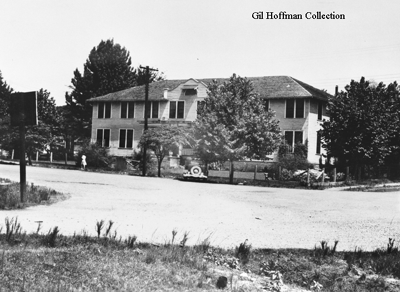
Hotel in Bude |
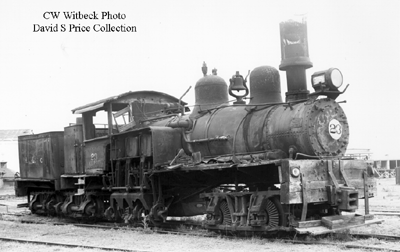
3-truck Shay No. 23 after the mill cut out. |
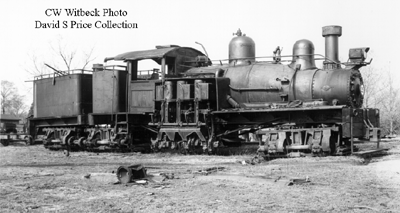
Shay No. 25 at Bude |
||||||||||||||||||||||||||||||||||||||||||||||||||||||||||||||||||||||||||||||||||||||||||||||||||||||||||||||||||||||||||||||||||||||||||||
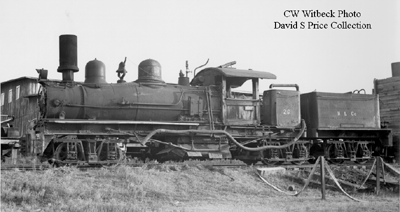
Shay 26 at Bude after the mill shut down. |
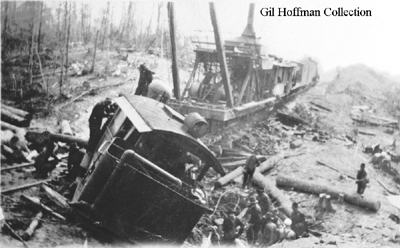
A Clyde skidder being used to clean up a wreck with one of the Shays. |
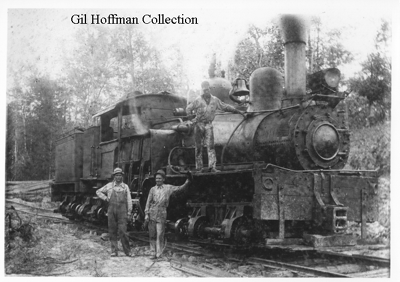
Homochitto Shay and crew in the woods of Franklin County. |
||||||||||||||||||||||||||||||||||||||||||||||||||||||||||||||||||||||||||||||||||||||||||||||||||||||||||||||||||||||||||||||||||||||||||||
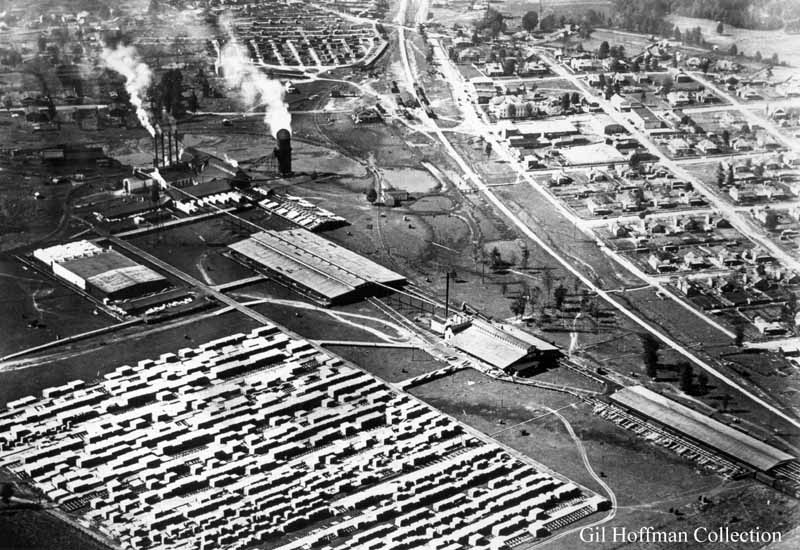
Aerial view from the 1920's showing the mill, depot, and town of Bude. |
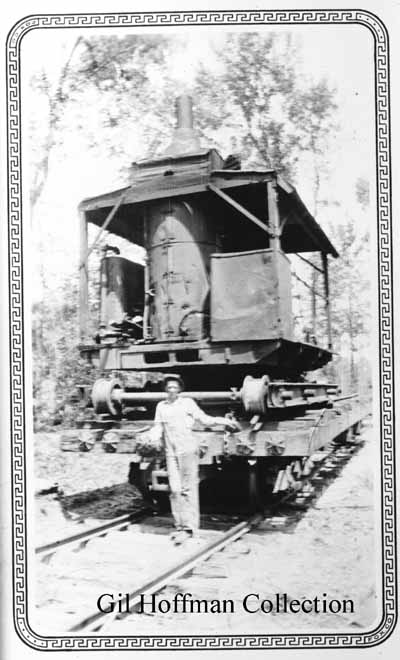
One of Homochitto Lumber Co.'s American log loaders. |
|||||||||||||||||||||||||||||||||||||||||||||||||||||||||||||||||||||||||||||||||||||||||||||||||||||||||||||||||||||||||||||||||||||||||||||
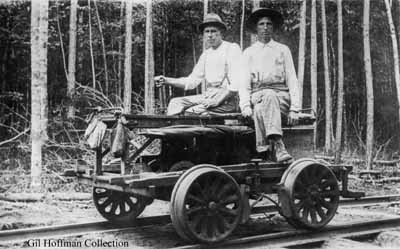
Homochitto section crew and motor car. |
||||||||||||||||||||||||||||||||||||||||||||||||||||||||||||||||||||||||||||||||||||||||||||||||||||||||||||||||||||||||||||||||||||||||||||||
| ROSTER by Gil Hoffman:
Note: Engines were renumbered sometime before 1920 to fit
in with the numbering scheme of the J. J. Newman mills at Hattiesburg
and Sumrall. |
||||||||||||||||||||||||||||||||||||||||||||||||||||||||||||||||||||||||||||||||||||||||||||||||||||||||||||||||||||||||||||||||||||||||||||||
For more information contact Tony Howe at howe6818@bellsouth.net or David S. Price at dsprice46@bellsouth.net